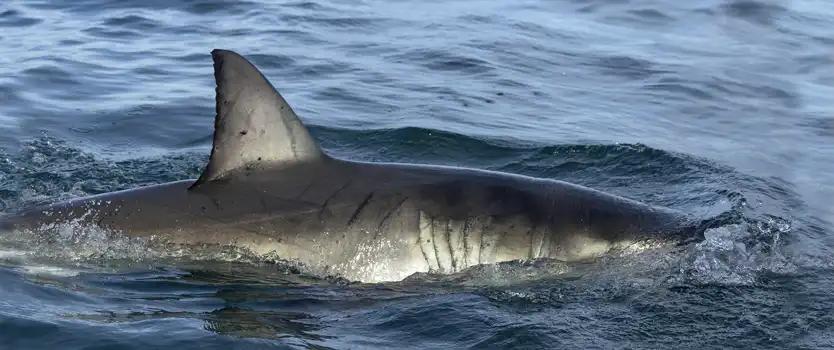Most people think the ocean is the only place where sharks live. However, there are some species of shark that live in freshwater. Though rare, these sharks, known as “River Sharks,” live in freshwater. River sharks are found mostly in Central and Southeast Asia and Australia, but scientists believe there may be more undiscovered river sharks in the world because they are very hard to track. Here is a guide to these unique freshwater sharks.

Prehistoric Origins
Freshwater sharks have prehistoric origins. In fact the very first sharks to appear on the planet were freshwater sharks. From the earliest known shark the Elegestolepis, that appeared around 450 million years ago, to the unique Xenacanthus, also known as the eel shark, that evolved 202 million years ago, the earliest ancestors of sharks lived in freshwater. It was not until the Carboniferous Age that sharks began dominating the oceans. So freshwater sharks have been around as long as sharks.
Most Sharks Cannot Survive In Freshwater
Though there are 43 species of sharks that will occasionally take short swims through freshwater looking for food, most sharks cannot live in freshwater for sustained periods of time. That is because their bodies are not adapted to freshwater climates. A shark’s body chemistry is designed to match the saltwater around them, so their bodies contain a lot of salt. The salt is balanced through a system of osmosis, where the shark’s body takes in water to ensure the salinity of their bodies matches the salinity of the surrounding water. In freshwater, which has no salinity, a shark will take in too much water. This can lead to a dulling of the senses, bloating, and eventually, death.
Furthermore, since sharks do not have a swim bladder like fish, they rely completely on their livers to help them stay buoyant. Saltwater is more 1.6 pounds (0.72 kg) more buoyant than freshwater. In order for sharks to compensate for this extreme difference, sharks would need livers eight times larger than the ones they have (which are already 25% of their total body weight) in order to maintain buoyancy. The issue with buoyancy leads to two big problems. The first is sharks require more energy to swim and the second is that sharks will sink.
River Sharks
River Sharks are the exception to the saltwater rule as they are highly adapted to live in freshwater. River Sharks have denser, fattier livers that hold more oil to help them stay afloat and provide more energy. This makes River Sharks have stockier, fattier bodies than most ocean sharks. They are also less efficient hunters, so they tend to compensate by being much more aggressive to ensure they can feed.
There are three known species of River Shark. Each has unique characteristics that have made these truly special species of sharks. They show that they are highly adaptive and can evolved unique characteristics to deal with the environmental pressure of where sharks live. These sharks are the Ganges Shark, the Northern River Shark, and the Speartooth Shark.
Ganges Shark
The Ganges Shark, which includes six described subspecies, spends its entire life in freshwater in rivers and estuaries. The Ganges Shark is found mainly in the Hooghly, Ganges, Brahmaputra, and Mahanadi rivers in India, Nepal, Pakistan, Borneo, and Myanmar. The Ganges Shark grows between 5 and 6.5 feet (174-204 cm) in length with brownish-gray skin. It has a short broad snout with a wide mouth and tiny eyes.
Though little is known about the hunting habits of the Ganges Shark, scientists believe that it eats bony fish and freshwater rays. Its eyes roll upward on its head, so it is believed that it hunts along the river floor looking upward for potential prey. The Ganges Shark usually hunts in a range of 62 miles (100 km) and uses sight, smell, and electroreception to detect potential prey.
Northern River Shark
The Northern River Shark, also known as the New Guinea River Shark, lives in the tidal rivers of Australia and New Guinea. The Northern River Shark, unlike the Ganges Shark does not spend its whole life in freshwater. Instead they live in rivers, and the brackish water of both estuaries and bays. The Northern River Shark, is the largest freshwater shark, and grows to 8.2-9.8 feet (2.5-3m) in length. It has steel blue and white coloring, a flat head, and small eyes.
Northern River Sharks have a highly developed sense of electroreception which helps them hunt in the flowing tidal waters. This also helps them find prey in darker, murkier waters where their eyesight is limited. Northern River Sharks eat bony fish and may rely on the ebb and flow of the tide to guide their hunting habits.
Speartooth Shark
The Speartooth Shark is also found in the tidal rivers of Australia and New Guinea. The Speartooth Shark is more adapted to different salinity levels than the Ganges and Northern River Shark and moves between freshwater rivers, brackish bays and estuaries, and may even occasionally venture into sea. The Speartooth Shark grows to 8.5 feet (2.6m) in length at maturity. Like other river sharks it has a flat, board head and small eyes.
The Speartooth Shark is a slow deliberate hunter, with a large second dorsal fin designed to help it swim slowly in rushing waters. Since it lives mostly in dark, murky waters, the Speartooth Shark relies heavily on electroreception to find and hunt prey. It is mostly a bottom feeder that hunts and eats bony fish, sting rays, and crustaceans along the riverbed.
So if you think the ocean is the only place where sharks live, think again. Between prehistoric sharks and a few rare species still living today, sharks have also been known to live in freshwater. However, since freshwater is uninhabitable, these unique sharks have developed some evolutionary adaptations to succeed in their environment.
